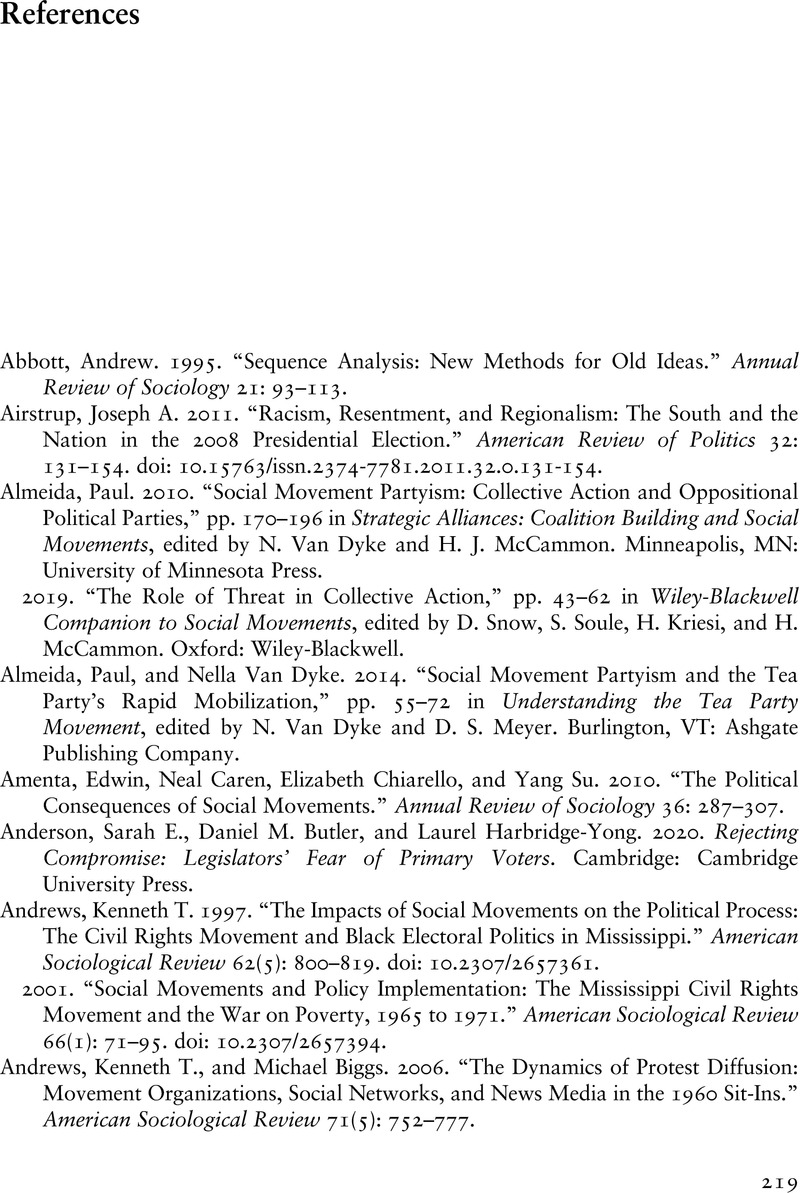Book contents
- The Rise, Fall, and Influence of the Tea Party Insurgency
- Cambridge Studies in Contentious Politics
- The Rise, Fall, and Influence of the Tea Party Insurgency
- Copyright page
- Contents
- Figures
- Tables
- Preface
- 1 The Tea Party
- 2 Toward a Theoretical Account of the Tea Party’s Rise and Fall
- 3 The Birth of the Insurgency
- 4 Tea Party Supporters, Activists, and Mobilizing Structures
- 5 The Trajectory of the Tea Party Insurgency
- 6 Threat, Political Integration, and the Disappearance of Local Tea Party Groups
- 7 Moving Off Message
- 8 How Tea Party Activism Helped Radicalize the House of Representatives
- 9 From Ridicule to Unbridled Enthusiasm
- 10 Conclusion
- Appendix Research Design: A Data Template for Spatiotemporal Collective Action Research
- References
- Index
- References
References
Published online by Cambridge University Press: 07 December 2023
- The Rise, Fall, and Influence of the Tea Party Insurgency
- Cambridge Studies in Contentious Politics
- The Rise, Fall, and Influence of the Tea Party Insurgency
- Copyright page
- Contents
- Figures
- Tables
- Preface
- 1 The Tea Party
- 2 Toward a Theoretical Account of the Tea Party’s Rise and Fall
- 3 The Birth of the Insurgency
- 4 Tea Party Supporters, Activists, and Mobilizing Structures
- 5 The Trajectory of the Tea Party Insurgency
- 6 Threat, Political Integration, and the Disappearance of Local Tea Party Groups
- 7 Moving Off Message
- 8 How Tea Party Activism Helped Radicalize the House of Representatives
- 9 From Ridicule to Unbridled Enthusiasm
- 10 Conclusion
- Appendix Research Design: A Data Template for Spatiotemporal Collective Action Research
- References
- Index
- References
Summary

- Type
- Chapter
- Information
- The Rise, Fall, and Influence of the Tea Party Insurgency , pp. 219 - 238Publisher: Cambridge University PressPrint publication year: 2023



